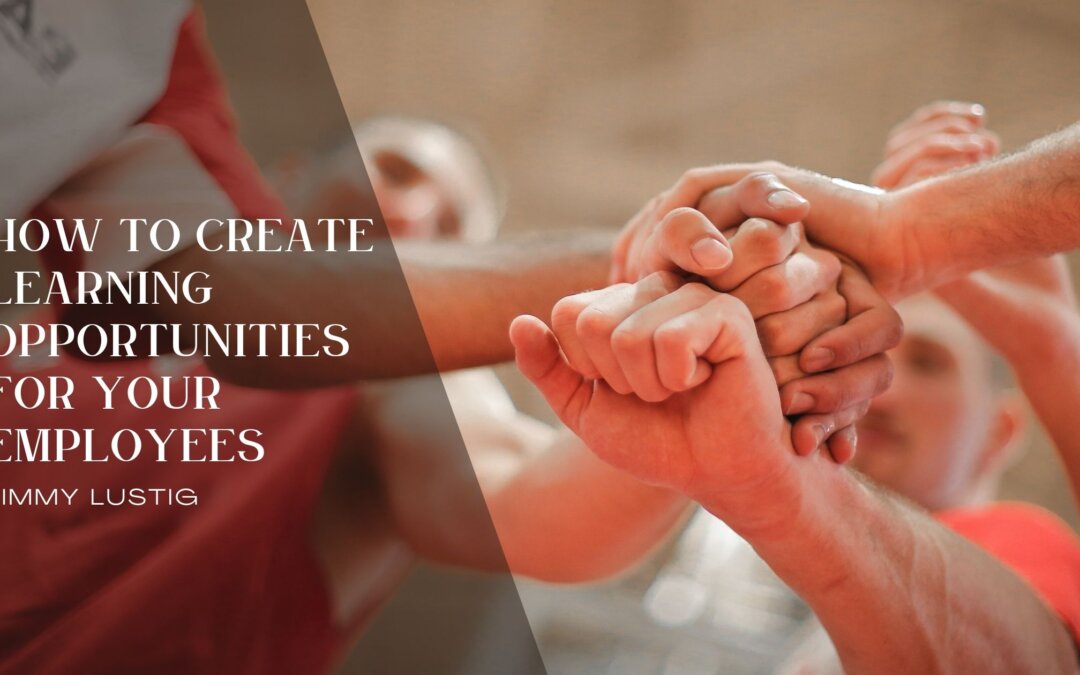In today’s fast-evolving business landscape, fostering a continuous learning and development culture cannot be overstated. As competition stiffens and technological advancements are made at a breakneck pace, ensuring your employees have the requisite skills to navigate this complex environment is crucial. More than just an employee perk, learning opportunities are an investment in your company’s future.
A well-educated workforce can foster innovation, improve performance, and enhance your company’s competitiveness. Furthermore, by showing a genuine interest in the professional development of your employees, you can boost morale, improve job satisfaction, and reduce turnover. However, creating meaningful learning opportunities is not always straightforward. It requires a thoughtful approach to ensure the learning initiatives are practical and beneficial for the employees and the organization.
Historically, employee training and development were often viewed as a necessary evil – a box to be ticked rather than an integral part of an organization’s success strategy. However, as the understanding of the importance of human capital has evolved, so has the approach to employee learning and development. Modern companies recognize that to stay competitive, it’s imperative to invest in the continuous skill development of their workforce. Moreover, a well-rounded employee learning program can help attract top talent, as ambitious professionals often prioritize organizations that offer robust development opportunities. Despite its significance, creating an environment conducive to learning is a multifaceted challenge that necessitates a strategic approach, an understanding of learning methodologies, and a commitment to nurturing a culture of continuous improvement.
Establishing a Learning Culture
A foundational step in creating learning opportunities is establishing a learning culture within the organization. Encourage employees to formally and informally pursue learning. Leaders should embody a learning mindset, continuously seeking to expand their knowledge and skills and encouraging their teams to do the same.
It is crucial to create a safe space where employees feel comfortable sharing their insights, asking questions, and making mistakes. Celebrate learning and improvement, and ensure that the pursuit of knowledge is seen as a valuable endeavor rather than a distraction from ‘real work.’
Additionally, a clear understanding of the skills and competencies crucial for your organization’s success is vital. This understanding can guide the creation of learning programs aligned with the organization’s goals and the individual’s career aspirations.
Utilizing Technology
Leveraging technology can significantly enhance the learning experience, making it more flexible and accessible. Platforms like Learning Management Systems (LMS) allow for the creation a centralized learning hub where employees can access training materials anytime, anywhere. This flexibility can be particularly beneficial for adult learners juggling multiple responsibilities.
Furthermore, technology can facilitate personalized learning pathways. By employing AI and data analytics, you can understand each employee’s learning style, pace, and interests and tailor the learning experience accordingly. This personalized approach not only makes learning more engaging but also more effective.
Moreover, integrating social learning platforms can foster collaborative learning experiences. Employees can learn from each other through forums, discussion groups, and interactive webinars, share insights, and solve problems collaboratively. The integration of technology not only augments the learning experience but also prepares employees for a digitized work environment.
Measuring and Improving
Measuring the impact of learning initiatives is critical for continuous improvement and demonstrating the ROI of learning investments. To assess the success of your learning initiatives, use precise measurements and key performance indicators (KPIs). These could include assessments of skill acquisition, behavioral change, and business impact.
Feedback is a crucial element of this measurement process. Collect employee feedback, monitor the application of new skills and knowledge in the workplace, and assess how it’s translating to improved performance and achieving organizational goals.
Investing in continuous improvement of learning programs is essential. Utilize the data and feedback collected to refine and enhance your learning initiatives. This iterative measurement, feedback, and improvement process will help ensure that your learning programs remain relevant, effective, and aligned with your organization’s and its employees’ evolving needs.
Creating a conducive learning environment within your organization is an ongoing process that demands strategic foresight, investment in technology, and a commitment to nurturing a culture of continuous improvement. The above steps offer a robust framework for establishing an impactful learning and development program. Organizations can significantly enhance their competitiveness, foster innovation, and build a more engaged and capable workforce by fostering a culture of continuous learning, leveraging technological tools, and adopting a data-driven approach to measure and improve learning initiatives.

